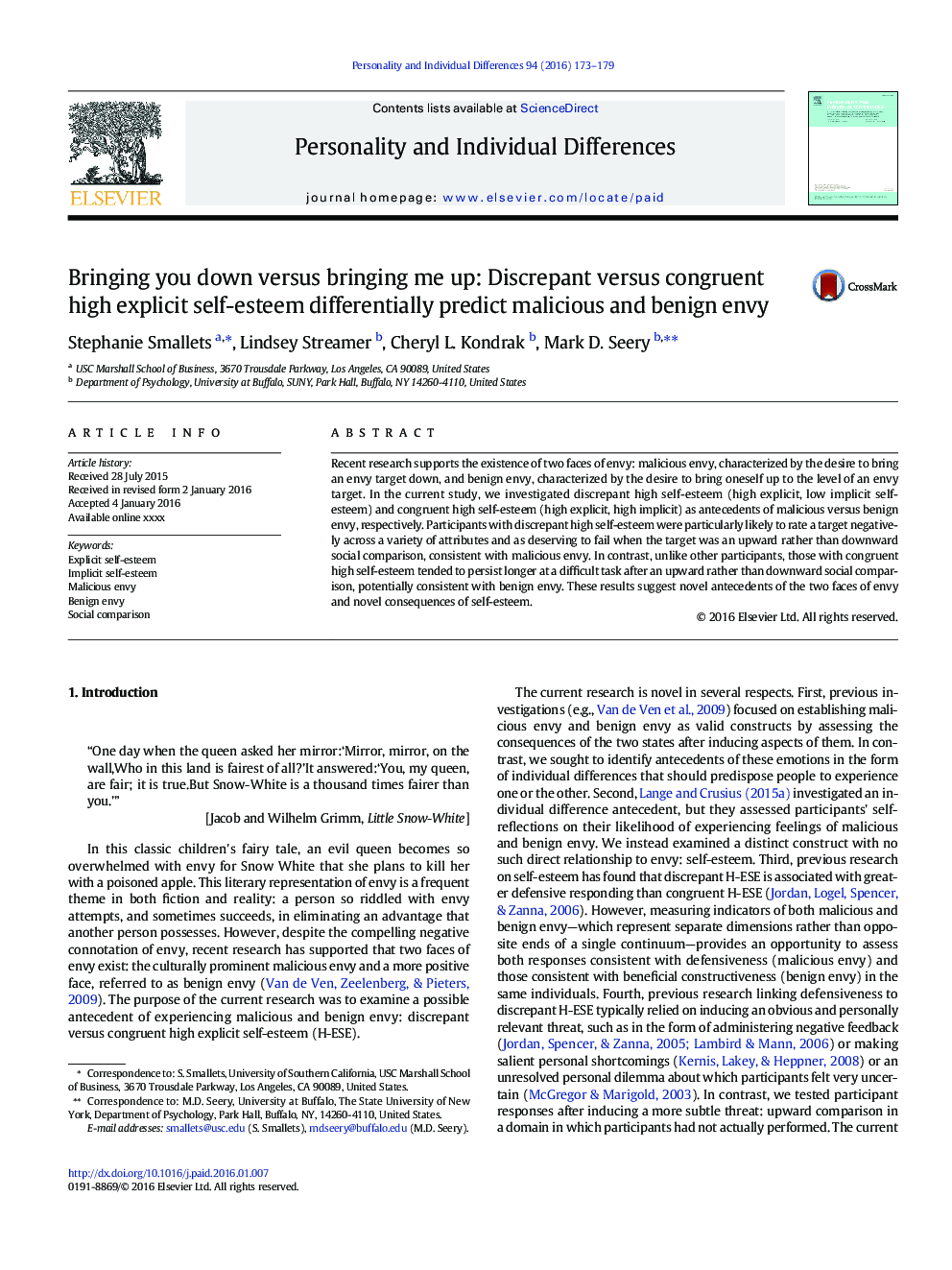| Article ID | Journal | Published Year | Pages | File Type |
|---|---|---|---|---|
| 7250361 | Personality and Individual Differences | 2016 | 7 Pages |
Abstract
Recent research supports the existence of two faces of envy: malicious envy, characterized by the desire to bring an envy target down, and benign envy, characterized by the desire to bring oneself up to the level of an envy target. In the current study, we investigated discrepant high self-esteem (high explicit, low implicit self-esteem) and congruent high self-esteem (high explicit, high implicit) as antecedents of malicious versus benign envy, respectively. Participants with discrepant high self-esteem were particularly likely to rate a target negatively across a variety of attributes and as deserving to fail when the target was an upward rather than downward social comparison, consistent with malicious envy. In contrast, unlike other participants, those with congruent high self-esteem tended to persist longer at a difficult task after an upward rather than downward social comparison, potentially consistent with benign envy. These results suggest novel antecedents of the two faces of envy and novel consequences of self-esteem.
Related Topics
Life Sciences
Neuroscience
Behavioral Neuroscience
Authors
Stephanie Smallets, Lindsey Streamer, Cheryl L. Kondrak, Mark D. Seery,
